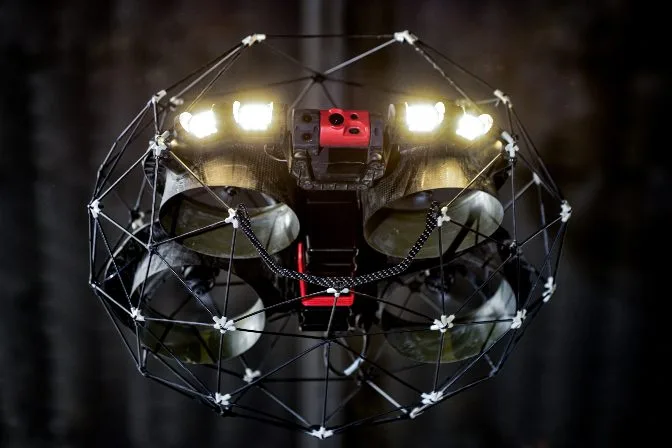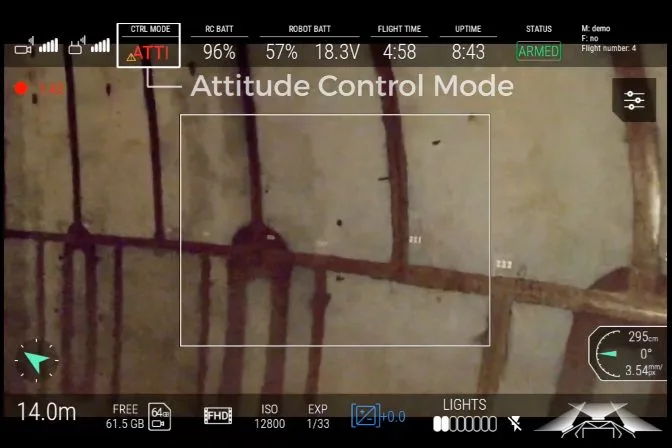ATTI Mode: A Complete Guide
ATTI mode, short for Attitude Mode, is the most hands-on way to fly a drone. It gives you full control over the aircraft without relying on GPS or visual positioning systems.
As drone technology continues to evolve, many modern drones come equipped with advanced automation features that make flying easier and more intuitive. These include GPS-based navigation, obstacle avoidance, and intelligent flight modes that handle much of the workload for the pilot.
However, there are still situations where ATTI mode is not just useful but essential. For instance, when flying indoors or in areas where GPS signals are weak or unavailable, ATTI becomes the go-to option. This mode allows pilots to maintain control even in environments where traditional sensors might fail.
In ATTI mode, the drone does not use GPS or optical sensors for stabilization. Instead, it relies on the pilot’s manual input to adjust the drone's orientation. This makes it ideal for scenarios where precise control is needed, such as inspections in tight spaces or in GPS-denied environments.

No GPS zone
What Is ATTI Mode?
ATTI mode is a flight setting that disables all automated assistance, including GPS and vision positioning systems. In this mode, the drone is entirely under the pilot’s control, requiring manual adjustments to maintain stability and direction.
Most drones operate in either GPS or OPTI mode, which offer varying levels of automation. But in ATTI mode, the drone doesn’t attempt to correct itself. This means it can drift, lose altitude, or tilt unless the pilot actively controls it. As a result, flying in ATTI mode requires skill, patience, and practice.
[Related read: What Is a GPS-Denied Drone?]
When to Use ATTI Mode
While ATTI mode is less common in consumer drones, it remains crucial for specific applications. Drones used in indoor environments, such as mines, sewers, and industrial facilities, often rely on ATTI mode because GPS signals are unreliable or completely absent.
Indoor drone operations present unique challenges, from signal interference to complex obstacles. In these cases, ATTI mode allows for greater precision and control. The mining industry, for example, has long relied on drones that can operate without GPS, making ATTI mode an essential feature.
One of the most well-known drones designed for ATTI mode is the Elios 3, which is built specifically for GPS-denied environments. In places like underground tunnels or confined spaces, the ability to fly without GPS is not just helpful—it’s necessary.
[Related read: Why We Made The Elios 3]
 The Elios 3
The Elios 3
Common Use Cases for ATTI Mode
ATTI mode is particularly useful in situations where GPS or vision systems cannot function properly. Here are some common scenarios:
- Indoor inspections: Drones are used to inspect boilers, tanks, and other enclosed spaces where GPS is out of range.
- Bridge inspections: Large metal structures can interfere with GPS signals, making ATTI mode a safer choice.
- Building inspections: Concrete and steel structures can block GPS signals, so ATTI mode helps maintain control.
- Critical infrastructure: Some sensitive locations restrict GPS usage, making ATTI mode the only viable option.
Drones like the Elios 3 are optimized for these challenging environments, offering precision and reliability in GPS-denied conditions.
How Does ATTI Work?
In ATTI mode, the drone operates without GPS or visual positioning systems. Pilots must manually control the drone’s attitude, meaning they have to constantly adjust its pitch, roll, and yaw. This mode is essentially a return to the basics of drone flying, where the pilot is fully responsible for maintaining stability and direction.
Some drones use a barometer to estimate altitude, but they won't prevent drifting due to wind or other environmental factors. This makes ATTI mode both more challenging and more rewarding for experienced pilots who enjoy the thrill of manual control.
What Conditions Can Trigger ATTI Mode Automatically?
- Flying over highly reflective or monochromatic surfaces
- Dirty or obstructed vision sensors
- Flying near large metal or concrete structures
- Using high-speed flight modes that reduce signal accuracy
Benefits of Flying in ATTI Mode
Although ATTI mode may seem daunting at first, it offers several advantages:
1. Helps You Prepare for the Unexpected
Signal loss, interference, or mechanical issues can turn a routine flight into a crisis. Knowing how to fly in ATTI mode prepares you for such scenarios and reduces your dependence on automated systems.
2. Optimized for Indoor Flying
Indoor environments are full of obstacles and signal disruptions. ATTI mode allows for more controlled flights in such settings, making it ideal for inspections and other tasks that require precision.
3. Smoother Footage
Many professional photographers and filmmakers prefer ATTI mode for smoother video shots. While automated systems make constant corrections that can cause jitter, manual control allows for a more stable and cinematic result—once you get the hang of it.
ATTI Mode Flying Tips
Flying in ATTI mode takes time and practice. Here are some tips to help you get started:
1. Start Slow
If you're used to GPS-assisted flying, transitioning to ATTI can be challenging. Begin with basic maneuvers like takeoff, hover, and landing before moving on to more complex patterns. Rushing will likely lead to crashes.
2. Fly in Open Spaces
Choose a wide, open area free of people, water, or obstacles. This gives you room to experiment and recover if things go wrong. As you gain confidence, you can try flying closer to objects using the live video feed.
3. Monitor Weather Conditions
Wind can significantly impact your control in ATTI mode. Avoid flying in strong gusts until you’re more experienced. Learning to handle wind will improve your skills and safety.
4. Practice on an Inexpensive Drone
Invest in a budget-friendly drone to practice ATTI mode. These models often lack advanced sensors, making them perfect for learning the basics without the risk of damaging an expensive device.
The Future of ATTI Mode
While consumer drones are trending toward more automation, ATTI mode still has a place in specialized applications. As industries like mining, construction, and inspection continue to adopt drone technology, the demand for reliable, manual flight options will grow.
Specialized drones like the Elios 3 are already leading the way, showing that ATTI mode isn’t obsolete—it’s evolving. Whether you're a hobbyist or a professional, mastering ATTI mode is a valuable skill that enhances your overall drone flying experience.

Other Drone Flight Modes
In addition to ATTI mode, there are several other common flight modes:
What is ASSIST Mode?
ASSIST mode is a standard flight mode that uses sensors to detect nearby objects and keep the drone stable. It’s great for beginners but has limitations in certain environments.
What is GPS Mode?
GPS mode uses satellite signals to provide accurate positioning and support advanced features like Return to Home and Waypoint Navigation. It’s the most popular mode for outdoor flying.
What is OPTI Mode?
OPTI mode uses optical sensors for stabilization but lacks GPS. It’s better than ATTI for indoor flying, but still requires careful handling.
Structural Parts,Components Of Plate Girder,Wooden Roof Structure,Components Of Bridges
CHANGZHOU LVSONG INTERNATIONAL TRADING CO.LTD , https://www.yhyuanhang.com